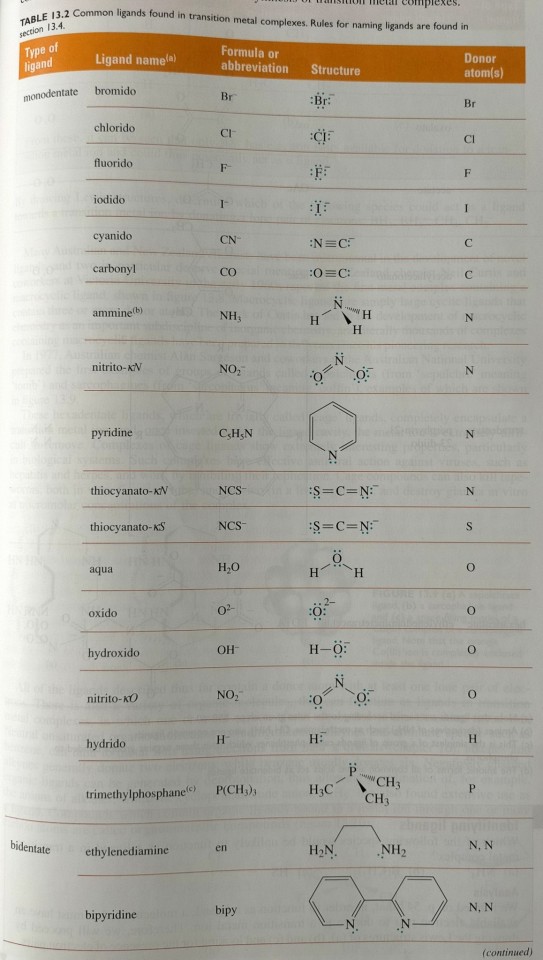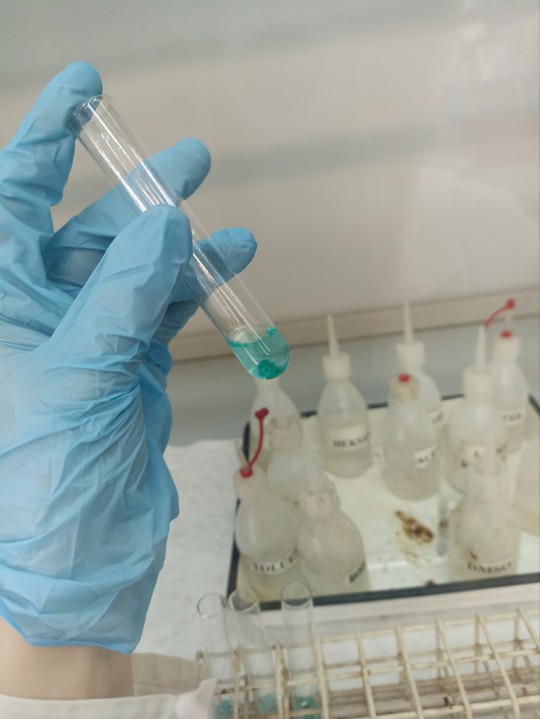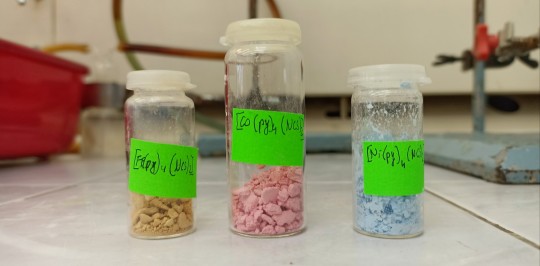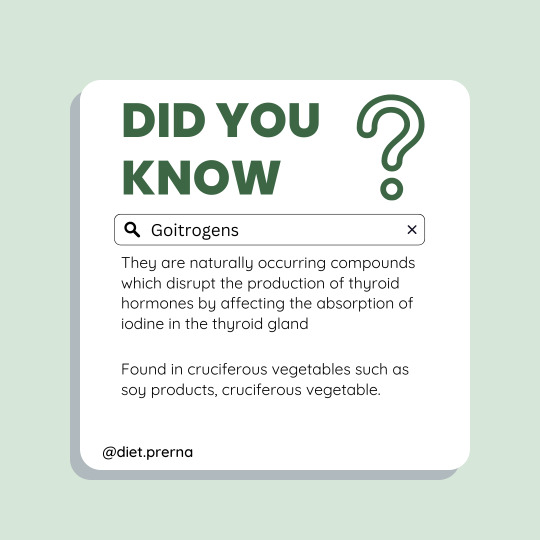#thiocyanate
Explore tagged Tumblr posts
Text

1 note
·
View note
Text
Common polyatomic anions that are ligands are the nitrite ion (NO2-), cyanide ion (CN-), hydroxide ion (OH-), thiocyanate ion (SCN-) and acetate ion (CH3COO-) (table 13.2). (...) There are a vast number of known ligands, and table 13.2 summarises some of the more common and important of those used in the synthesis of transition metal complexes.


"Chemistry" 2e - Blackman, A., Bottle, S., Schmid, S., Mocerino, M., Wille, U.
#book quotes#chemistry#nonfiction#textbook#ligand#ions#cation#anion#bromine#chlorine#fluorine#iodine#cyanide#carbonyl#ammonia#nitrogen dioxide#pyridine#thiocyanate#water#oxygen#hydroxide#hydrogen#trimethylphosphine#ethylenediamine#bipyridine#glycinate#oxalate#acetate#acetylacetonate#edta
1 note
·
View note
Text
5/5 ON THE VERBAL EXAM BABEYYYYYYYYYY
THIOCYNATE PROOF I KNOW YOU'RE ALWAYS HERE FOR ME!!!!! I LOVE YOU BARIUMCARBONATE!!!!!!!!
#feli speaks#uni posting#chat i fucking WON#''okay so tell me the iron proof'' <- chat i fucking won so hard#i am god's specialest little guy truly#the heavens smile upon me. i impressed the lab assistant by demonstrating an understanding of things even when i didnt know how to draw#amylalcohol. but i just explained straight out the fucking KTG#god i am so happy w this#i was soooo lucky to get the one lab assistant who actually treated it like a Verbal Exam#like the assis had sheets with questions on them and some peeps just had to fill it out#but the guy just used it as inspo to ask me stuff#and was more focused on my ability to walk through the process and explain it#and even let me pick some of my own examples!#i still had to draw some shit ofc and write down a couple equations#but those equations were. bariumcarbonate and the thiocyanate proof so like. i fucking lucked out jesus christ#i could do those two in my SLEEP
8 notes
·
View notes
Text
More on chemistry, may I introduce you to
✨✨Angry Water✨✨

This is concentrated hydrochloric acid, specifically 12 molar, and we were working with it during lab today.
The safety brief at the beginning of lab told us
This baby will eat through your:
Clothes
Gloves
Skin
The grout in counter
The counter
And even the Rubber pipette bulb if you let the fumes build up
Do not fuck up with it
And that's really all we had to hear
Do not fuck with the angry water
#hydrochloric acid#chemistry#angry water#i wore a new flannel today#bad idea#the cobalt potassium thiocyanate mixture looked tasty though#chem lab
2 notes
·
View notes
Text
U.S. Sodium Thiocyanate Prices 2025, News, Trend, Graph, Chart and Forecast
Sodium Thiocyanate prices in the global market have been subject to fluctuations due to various influencing factors, including raw material costs, supply-demand dynamics, geopolitical conditions, and economic trends. The chemical is widely used in industries such as pharmaceuticals, textiles, agriculture, and electroplating, making its pricing highly sensitive to shifts in industrial production and end-user demand. Over the years, sodium thiocyanate has witnessed variable pricing trends, driven by the availability of key raw materials such as sodium cyanide and sulfur compounds. The prices of these precursors significantly impact the overall cost structure of sodium thiocyanate production, leading to price volatility in the market.
One of the primary drivers of sodium thiocyanate pricing is the cost of raw materials. The supply and pricing of sodium cyanide, a crucial input, are often influenced by regulations, environmental policies, and production costs in key manufacturing regions. Additionally, sulfur-based raw materials contribute to price movements, especially when there are disruptions in supply chains or changes in mining and refinery output. Industrial manufacturing capacity also plays a critical role, as fluctuations in plant operations and production rates can lead to supply constraints or surpluses, thereby affecting market prices.
Global supply chain dynamics have further added to the volatility of sodium thiocyanate prices. The ongoing shifts in trade policies, international tariffs, and logistics costs have impacted the import-export balance, causing price variations across different regions. Disruptions in shipping routes, port congestions, and increasing freight charges have contributed to rising procurement costs for buyers, ultimately affecting the overall market pricing. Moreover, the regional disparities in production capacities and consumption levels create imbalances that influence sodium thiocyanate price trends in different markets.
Get Real time Prices for Sodium Thiocyanate: https://www.chemanalyst.com/Pricing-data/sodium-thiocyanate-1547
The demand side of sodium thiocyanate pricing is heavily driven by its end-use applications. In the pharmaceutical industry, the compound is used as a reagent and intermediate in various formulations, making its demand relatively steady. However, fluctuations in pharmaceutical production, regulatory approvals, and research activities can lead to periodic demand variations. The textile sector, another significant consumer of sodium thiocyanate, has witnessed changing demand patterns influenced by seasonal variations, consumer preferences, and economic conditions affecting textile manufacturing output. Additionally, the compound’s role in agriculture as a pesticide and fertilizer additive contributes to market demand, particularly during peak agricultural seasons.
Market trends have shown that regional factors play a crucial role in determining sodium thiocyanate prices. Countries with large-scale production facilities, such as China and India, often experience different pricing dynamics compared to regions with lower domestic production capacities. China, being one of the leading producers, has a significant influence on global price movements, with its export policies, production costs, and environmental regulations affecting supply levels. India, another key player, has seen price fluctuations based on domestic consumption trends and regulatory frameworks governing the chemical industry. In contrast, regions that rely heavily on imports, such as Europe and North America, experience price variations due to changes in import duties, shipping costs, and supplier availability.
Economic conditions also play a vital role in sodium thiocyanate price movements. Inflation, currency exchange rates, and economic downturns affect industrial production and consumer spending, leading to shifts in demand for the chemical. The recent economic slowdowns and global uncertainties have impacted chemical supply chains, causing price fluctuations in the market. Additionally, fluctuations in crude oil prices have an indirect effect on sodium thiocyanate production costs, as petroleum-based products are used in various stages of chemical manufacturing and logistics.
Sustainability and environmental concerns have increasingly influenced sodium thiocyanate pricing trends. Governments and regulatory bodies across different regions have imposed stricter environmental norms, leading to increased compliance costs for manufacturers. The enforcement of sustainable production practices, waste management regulations, and emission control measures has raised operational costs, which are ultimately reflected in the market prices of sodium thiocyanate. Moreover, the shift towards greener alternatives and the development of eco-friendly chemical processes have influenced market dynamics, potentially altering long-term pricing structures.
The COVID-19 pandemic had a profound impact on sodium thiocyanate prices, as it disrupted supply chains, manufacturing activities, and international trade. During the peak of the pandemic, factory shutdowns, labor shortages, and transportation restrictions led to supply constraints, causing price spikes in several regions. However, as economies gradually recovered, production levels normalized, leading to price corrections in the market. The pandemic also highlighted the importance of supply chain resilience, prompting companies to diversify sourcing strategies and establish more stable procurement channels to mitigate future price volatility.
Looking ahead, the sodium thiocyanate market is expected to witness continued price fluctuations driven by evolving industrial trends, regulatory developments, and economic factors. The increasing adoption of digital technologies and automation in chemical manufacturing is likely to impact production efficiencies and cost structures, potentially stabilizing price movements. Additionally, the rising demand for sodium thiocyanate in emerging applications, including specialty chemicals and advanced materials, could influence future pricing trends. As companies focus on innovation and sustainability, the market may see shifts in production methods that could impact overall pricing in the coming years.
In conclusion, sodium thiocyanate prices are subject to various influencing factors, ranging from raw material costs and supply chain dynamics to economic conditions and regulatory frameworks. The market remains volatile, with periodic fluctuations driven by industrial demand, production capacities, and external macroeconomic forces. As industries continue to evolve and adapt to changing market conditions, sodium thiocyanate pricing trends will likely be shaped by a combination of technological advancements, trade policies, and sustainability initiatives. Businesses operating in this sector must closely monitor these factors to navigate market uncertainties and make informed procurement decisions.
Get Real time Prices for Sodium Thiocyanate: https://www.chemanalyst.com/Pricing-data/sodium-thiocyanate-1547
Contact Us:
ChemAnalyst
GmbH - S-01, 2.floor, Subbelrather Straße,
15a Cologne, 50823, Germany
Call: +49-221-6505-8833
Email: [email protected]
Website: https://www.chemanalyst.com
#Sodium Thiocyanate Pricing#Sodium Thiocyanate News#Sodium Thiocyanate Demand#India#united kingdom#united states#Germany#business#research#chemicals#Technology#Market Research#Canada#Japan#China
0 notes
Text
I love when sci-fi/fantasy writers throw in a random fact about a fictional species that actually has big repercussions for that species' biology.
Like, there is a species in Star Trek called Saurians who are adorable dinosauroid looking dudes. They've had very little revealed about them despite having been mentioned as early as the original series by way of "Saurian brandy" — a drink that is so strong it can put a Klingon on their ass in one swig.

Other than that, most of what we know about them comes from snippets involving a reoccuring character on Discovery named Linus, who is mostly a comic relief character. Now the reason I bring them up is that in one episode there's a scene where Linus is eating bamboo of all things, and I'm not sure the writers realized how telling this is about Saurian biology.
Bamboo is a damn hard food to eat, and us humans can only eat the shoots of a few species. Even then, raw consumption of shoots can lead to cyanide poisoning if you aren't careful. We still don't know how exactly a lot of animals that eat a lot of bamboo (bamboo lemurs, red pandas, bamboo rats, elephants, gorillas) are able to digest so much of it without getting cyanide poisoning. There is some sort of neutralization process in giant pandas involving the rhodanese enzyme that turns cyanide into the non-toxic thiocyanate that they just pee out, but the process is still poorly understood in other species.

Bamboo is also hard to digest for the same reason all grasses are; their plant wall cellulose is hard as hell to break down. Like, your choices are:
a) you do a poor job of digesting it and just spend all day eating (giant panda, red panda, bamboo lemur)
b) you grow really big and have a big gut (elephants, gorillas)
c) you only eat the parts of the plant that are easier to digest (bamboo rats)
On top of that, bamboo is loaded with silica phytoliths that are like microscopic bits of glass. These evolved to make their tissues even harder to chew and metabolize.
It's hard to make out in the scene, but it looks like Linus is eating raw bamboo leaves. Just picking them up with his fingers and munching on them like it's nothing. That means his teeth and/or jaws would need to be very powerful (maybe hypsodont? or maybe tooth batteries?) AND, because he's eating it raw, he'd have to be immune to the cyanide in some way.

One explanation could be in the Star Trek Adventures TTRPG, where Saurians are said to have an ability called "Enhanced Metabolism" where they recover from toxins faster than other species (my guess is this was meant to reference their brandy being so strong). BUT, that's not the same thing as the immunity real bamboo eating animals seem to have. My head canon is that Saurians have a diet similar to red pandas, where bamboo-like plants are their main diet on their homeworld, but they'll eat other stuff too when it's available, AND they've evolved some way to convert cyanide into a harmless chemical they excrete, like a giant panda.
All of these whacky biology shenanigans stem (hehe) from the casual writing decision to make a supporting alien character seem weird by eating a weird thing.

1K notes
·
View notes
Text



27 March 2025
I got a perfect 10/10 points on the second crystallo test and I am brimming with pride :') Nobody but me knows how much effort it cost me but it was so worth it!!
I made some thiocyanate complexes in inorganic synthesis today and I wish the pics could do them justice. The colors were so gorgeous! I love coordination chem 💕
#im so exhausted after this lab but it's been a great day#mine#op#studyblr#chemblr#chemistry#studyspo#stemblr#study motivation#study
64 notes
·
View notes
Note
cobalt thiocyanate
- the "yaouri" anon, not the "babygirl" anon
There is an imposter among us.
#inkyspeaks#okay i understand now. i am on to you two plotters and schemers#(context is it has to be one of my roommates. or both of them)#THOUGH I STILL DON'T KNOW WHO THE BABYGIRL ANON IS#inkyanswers
5 notes
·
View notes
Text
okay, so the secret of our success lists several sources about cyanide poisoning from cassava/manioc. his sources are are:
For a review of the health effects, see Nhassico et al. 2008.
See Dufour 1994, Wilson and Dufour 2002, Jackson and Jackson 1990, and Dufour 1988a, 1988b. Varieties of manioc respond to drought by massively increasing their cyanogenic output. Bitter manioc supplies 70% of the Tukanoans’ calories.
See Dufour 1984, 1985.
This appears to have happened in the Democratic Republic of Congo (Tylleskar et al. 1991, 1992).
The emergence of specific negative health impacts is complex and depends on other factors such as the presence of sulfur in the diet (Jackson and Jackson 1990, Tylleskar et al. 1992, 1993 Peterson, Legue, et al. 1995, Peterson, Rosling, et al. 1995). Jackson and Jackson discuss a processing technique that actually increases cyanogenic content. See Padmaja 1995 for a review of processing techniques
Peterson and Legue:
The thorough traditional processing-method strictly adhered to in the central study area effectively removed cyanogens as indicated by low urinary thiocyanate. Frequent shortcuts in processing in the western area resulted in cyanide exposure as indicated by urinary thiocyanate levels three times higher. We conclude that insufficiently processed cassava aggravates IDD in parts of CAR
note however that this paper explicitly contradicts the claims of henrich referenced in scott's article
However, reports of accidental acute intoxications and the bitter taste of roots in the village indicate that total cyanogen content of roots is high
the village that used shortcuts had acute intoxication and bitter roots! so it's not some thing where the effects of not following tradition are very subtle and impossible to connect with manioc.
it seems from several sources the rapid spread of manioc in the modern era is at least partial responsible, plus shift towards market economy.
44 notes
·
View notes
Text
Cyanide info dump

It takes about 150-1,000 crushed apple seeds to off an adult. Each apple seed contains 1-4 milligrams of amygdalin which is a cyanogenic glycoside composed of cyanide and sugar. The body can process small amounts of it without causing harm. Eating the amount of seeds can cause cyanide poisoning and potentially death.
However eating roughing 10 crushed up cherry seeds contains enough Prussic acid (aka cyanide) to also off a grown man.
So in smaller doses the body can process it normally by changing it into thiocyanate but in higher doses the body’s ability to do that gets overwhelmed and cannot process it. Cyanide in large doses that don’t get changed into thiocyanate, starts attacking cells and restricting them of using oxygen which then leads to the cells dying off. Parts of the body are more susceptible to this, of that being the heart, lungs and the central nervous system. This is why cyanide poisoning can lead to death.
9 notes
·
View notes
Text

Did you know what is GOITROGENS? MECHANISM OF GOITROGENS IN THE BODY
1)Foods such as (sorghram, sweet potato, linseeds)- they contain cyanogenic glycosides which are metabolized to thiocyanates that compete with iodine for thyroidal uptake.
2)Cruciferous vegetables such as (cabbage, kale, cauliflower, broccoli, turnips)- they contain glucosinolates; metabolites compete with iodine for thyroidal uptake
3)Soy millet- Flavonoids impair thyroid peroxidase activity
4)Selenium deficiency- Accumulated peroxides may damage the thyroid, and deiodinase deficiency impairs thyroid hormone synthesis.
5)Iron deficiency- Reduces heme-dependent thyroperoxidase activity in the thyroid and may blunt the efficacy of iodine prophylaxis.
6)Vitamin A deficiency- Increases TSH stimulation and goiter through decreased vitamin A-mediated suppression of the pituitary gland.
Join us on a path to better health.💪✨ https://dietstory.in/
Let's keep warm and healthy together! ❄️💚 🌐https://www.dietstory.in/ 📬 [email protected] ☎ +91-7743004991
3 notes
·
View notes
Text
anyways disregarding the khml cancellation, did you know the thiocyanate and cobalt proofs are the exact same proof? and that the disturbance of the cobalt proof - thiocynate and iron-ions forming a stable red complex - is just an iron proof? isn't that wonderful that three separate things i need to remember are in fact just one single thing
7 notes
·
View notes
Text
omfg i hate translating chemical names in japanese bc it's just the ugliest string of katakana you've ever seen and you sound it out and it means nothing so you type it into the dictionary and sure enough, it's also the ugliest string of alphabet letters youve ever seen. like wtaf is potassium thiocyanate. who is acrylonitrile. i am approaching you with a knife and the MOST ill intent.
#tirah talks#to be fair to acrylonitrile#it is much easier to deal with if you see it in english first#akurironitoriru is the problem here
2 notes
·
View notes
Text
Sodium Thiocyanate Prices: Trend | Pricing | News | Price | Database

Sodium Thiocyanate Prices is a chemical compound widely utilized across various industries, including pharmaceuticals, agriculture, and textiles. The pricing dynamics of sodium thiocyanate in the market are influenced by a complex interplay of factors such as raw material availability, production costs, demand fluctuations, and global economic conditions. Recently, the sodium thiocyanate market has garnered significant attention due to its critical applications in diverse sectors. This increased focus has led to considerable changes in pricing trends, impacting stakeholders across the value chain.
One of the primary determinants of sodium thiocyanate prices is the cost and availability of raw materials such as sulfur and cyanide compounds. The production process relies heavily on these inputs, making their market volatility a key factor in price fluctuations. For instance, disruptions in the supply of sulfur due to geopolitical tensions or natural calamities can lead to significant price hikes in sodium thiocyanate. Similarly, environmental regulations targeting the production and handling of cyanide compounds can add to manufacturing costs, subsequently influencing the overall market price of the compound.
Get Real time Prices for Sodium Thiocyanate: https://www.chemanalyst.com/Pricing-data/sodium-thiocyanate-1547
Demand dynamics also play a crucial role in shaping the pricing landscape for sodium thiocyanate. The pharmaceutical industry, which utilizes sodium thiocyanate in various formulations, has been a major driver of demand. With the increasing focus on healthcare and the growing prevalence of chronic diseases, the need for pharmaceutical intermediates has surged, creating upward pressure on sodium thiocyanate prices. Additionally, the agricultural sector’s adoption of sodium thiocyanate in pest control and crop protection solutions has further amplified demand. Seasonal fluctuations in agricultural activities and the varying intensity of pest infestations can lead to periodic surges in the compound’s demand, thereby affecting its pricing.
The textile industry is another significant consumer of sodium thiocyanate, where it is employed in dyeing and printing processes. The growth of the textile sector, particularly in emerging economies, has contributed to a steady increase in demand for this compound. However, economic slowdowns or reduced consumer spending on apparel can have the opposite effect, leading to decreased demand and downward price adjustments. Global economic trends, such as inflation and currency exchange rates, also indirectly impact sodium thiocyanate prices. Higher inflation can drive up production and transportation costs, while unfavorable exchange rates may increase import and export expenses for market participants.
Technological advancements in the production of sodium thiocyanate have also influenced its pricing trends. Innovations aimed at improving production efficiency and reducing environmental impact have helped manufacturers lower costs, which in turn can stabilize or reduce market prices. However, the initial investment in advanced production technologies can be substantial, potentially leading to short-term price increases as companies seek to recover their expenditures. Additionally, market competition plays a pivotal role in price determination. The entry of new players, particularly from regions with cost-effective production capabilities, can lead to increased competition and potentially drive prices down. Conversely, market consolidation through mergers and acquisitions can reduce competition, allowing dominant players to exert greater control over pricing.
Geopolitical factors and trade policies are additional elements that significantly influence the sodium thiocyanate market. Tariffs, trade restrictions, and import-export regulations can create barriers to international trade, affecting supply chains and pricing. For example, restrictions on chemical exports from major producing countries can lead to supply shortages in importing regions, driving up prices. On the other hand, trade agreements that promote the free flow of goods can enhance market stability and mitigate price volatility. Environmental and safety regulations also impact the market. Stricter guidelines for the production, transportation, and storage of sodium thiocyanate can increase compliance costs for manufacturers, influencing the overall pricing structure.
Another factor to consider is the growing emphasis on sustainability and green chemistry. As industries across the globe strive to reduce their environmental footprint, there is increasing demand for eco-friendly production processes and sustainable products. This trend has prompted sodium thiocyanate manufacturers to adopt greener production methods, which may involve higher costs but can also attract premium pricing in niche markets focused on sustainability. Consumer preferences for sustainable products can also indirectly shape the market dynamics, influencing the compound’s demand and price trends.
Market forecasts for sodium thiocyanate indicate a steady growth trajectory, driven by its expanding applications and the growing demand from end-use industries. However, uncertainties remain, particularly regarding raw material availability and regulatory changes. Stakeholders in the sodium thiocyanate market are increasingly adopting strategic approaches to navigate these challenges. Long-term contracts with raw material suppliers, investments in research and development, and collaborations with end-users to develop customized solutions are some of the strategies being employed to ensure market competitiveness and price stability.
In conclusion, the sodium thiocyanate market presents a dynamic pricing landscape shaped by a multitude of factors ranging from raw material costs and demand dynamics to technological advancements and geopolitical influences. As industries continue to adapt to changing market conditions and prioritize sustainability, the pricing trends of sodium thiocyanate are likely to reflect these broader shifts. Understanding these complexities is crucial for market participants aiming to make informed decisions and capitalize on emerging opportunities in this evolving market.
Get Real time Prices for Sodium Thiocyanate: https://www.chemanalyst.com/Pricing-data/sodium-thiocyanate-1547
Contact Us:
ChemAnalyst
GmbH - S-01, 2.floor, Subbelrather Straße,
15a Cologne, 50823, Germany
Call: +49-221-6505-8833
Email: [email protected]
Website: https://www.chemanalyst.com
#Sodium Thiocyanate#Sodium Thiocyanate Prices#Sodium Thiocyanate Price#Sodium Thiocyanate Pricing#Sodium Thiocyanate News
0 notes
Text
0 notes
Text
Concrete curing is an essential process in construction that directly influences the strength, durability, and longevity of the structure. However, in fast-paced projects, reducing the curing time of concrete becomes critical. By adopting the right mix of science, strategy, and technology, we can accelerate the curing process without compromising quality.
Below, we provide a comprehensive guide on how to effectively reduce the curing time of concrete, using practical, proven, and advanced techniques.
Understanding the Basics of Concrete Curing
Curing refers to the process of maintaining adequate moisture, temperature, and time to allow concrete to achieve its desired properties. Typically, standard curing takes around 28 days to reach full strength. However, this duration can be reduced significantly through methodical interventions.
1. Use of Accelerating Admixtures
One of the most effective ways to reduce curing time is by using accelerating admixtures.
Calcium chloride (CaCl2) is the most commonly used accelerator. It speeds up the hydration process, leading to faster strength gain.
Non-chloride accelerators like calcium nitrate, sodium thiocyanate, and triethanolamine are suitable for steel-reinforced concrete to prevent corrosion.
These admixtures reduce the setting time and allow for earlier finishing and loading of the structure.
Read more
0 notes